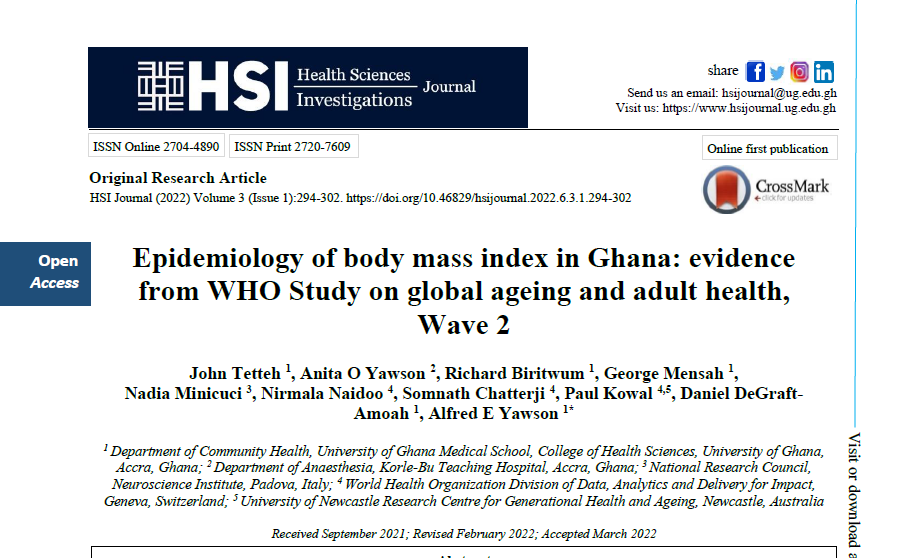Epidemiology of body mass index in Ghana: evidence from WHO Study on global ageing and adult health, Wave 2
Epidemiology of body mass index in Ghana
Abstract
Background: The increased prevalence of overweight and obesity are directly related to economic development, eating habits and changes in physical activity levels.
Objective: This study aimed to examine population-level body mass index (BMI) and associated factors.
Methods: Data from World Health Organization Study on global AGEing and adult health Ghana Wave 2 conducted in 2015 among adults 18 years and older was used for the analysis. Body mass index was used as the main outcome measure. Inferential statistics involving ordered logistic regression models were carried out to assess risk predictors of obesity.
Results: The prevalence of overweight and obesity BMI were 24.7% and 12.9% respectively. The prevalence of obesity varied across the regions, with relatively higher rates in southern regions (highest in the Greater Accra region, 28.3%) and was higher in women than men (20.4% versus 3.9%). Significant predictors [adjusted odds ratio (aOR) with 95% confidence interval (CI)] of obesity included female sex (aOR = 2.94, 95% CI = 2.25 – 3.86), adults aged 50 – 59 years (aOR = 3.95, 95% CI = 2.68 – 5.83), dwellers in the capital region, Greater Accra (aOR = 3.58, 95% CI = 2.02 – 6.36) and ≥ 5 fruit intake [3.12 (1.74 – 5.63)].
Conclusion: The prevalence of obesity among adult Ghanaians (≥ 18 years) has increased over two-fold in a decade based on analysis using similar methods and survey data. Increasing age and place of residence are significantly associated with high BMI. Our findings support the implementation of Ghana's 2012 national policy for the prevention and control of chronic non-communicable diseases (NCDs). The policy aims to change the trajectory of factors that contribute to NCD and fulfil WHO's NCD Target 7 for halting the growth in obesity and diabetes by 2025.


